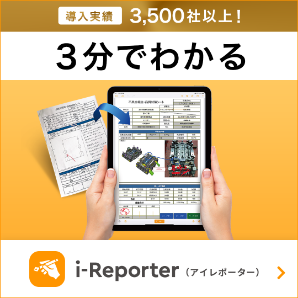7 ways to combat the cold in factories! Explaining the main causes and measures that individuals and companies can take
table of contents
Cold weather in factories and warehouses is a major issue that directly affects the health and work efficiency of employees. This can lead to a decline in work efficiency, an increase in human error, and even employee ill health and turnover. However, due to the unique structure and nature of work in factories, many companies are unable to take concrete measures.
In this article, Main causes of cold in factories and practical cold weather protection measures We will explain in an easy-to-understand manner. From full-scale measures such as partitions and air conditioning equipment by companies to simple clothing ideas that individuals can take, Specific ways to improve your work environment We will introduce some of these, so please feel free to use them as a reference.
Main causes of cold factories
We often hear people on-site asking, "Why is it so cold?" Here, we will explain the specific reasons why factories get so cold, divided into four points.
High ceilings and spacious space
One of the reasons why factories and logistics warehouses tend to feel cold is due to their structure. With spacious working environments and high ceilings to efficiently arrange customer cargo and equipment, warm air quickly escapes upwards, making your feet more likely to get cold.
As a result, workers' feet and the floor area are always cold, and even when heating equipment is used, the warm air remains near the ceiling, causing the important work space to take a long time to heat up.
Cold concrete floor
Concrete is generally used for factory floors due to its durability and ease of cleaning. Materials that cool easily, such as concrete, remain cold for a long time once they cool.
In particular, in winter, heat conduction from the floor can easily take away body heat through the feet, which is a major reason why workers feel very cold.
Frequent visits
In factories and warehouses at logistics centers, entrance shutters and entrance doors are frequently opened and closed to bring in materials and take out products. Every time a truck driver opens or closes the door while loading or unloading, a large amount of cold air from outside enters the room, causing the air that has been warmed by heating equipment to escape to the outside, making it easier for the room temperature to drop.
In particular, in logistics centers and large manufacturing sites, the inflow of outside air caused by frequent comings and goings makes it difficult to stabilize the room temperature, which is a major reason why measures to protect against the cold are less effective.
Poor insulation
Buildings such as general factories and logistics warehouses often do not have sufficient insulation due to cost and structural reasons. When a building has poor insulation, it is more susceptible to the effects of outside temperatures, and in winter, cold air can easily penetrate into the room through the walls and roof.
Heating efficiency will decrease significantly, and you may find yourself in a situation where no matter how much you heat the room, it is difficult to get it warm.
What is the impact of cold in factories?
Cold weather in factories can have a variety of negative effects, from employee anxiety and health to a company's productivity and economics. Here we will explain the specific effects of cold weather in factories.
Increased health risks
A cold working environment has a direct negative impact on employee health, as poor circulation and muscle stiffness caused by the cold increase the risk of illness and injury.
In particular, being exposed to a cold environment for a long period of time can increase fatigue, making it difficult to manage your health.
Decreased work efficiency
Cold weather significantly reduces a worker's ability to concentrate. Cold hands make it difficult to perform detailed work, and shivering bodies make it difficult to assemble parts accurately, increasing the risk of work errors and accidents.
This impact is particularly pronounced in manufacturing sites where precision work is required, and in food factories and other places where strict temperature control is required. As a result, productivity may decrease, leading to delivery delays and quality issues.
Increased energy costs
Heating efficiency tends to be poor in factories and warehouses run by shipping companies, which have large spaces. In buildings with poor insulation or environments where cold outside air frequently enters, the heat that has been worked so hard to generate quickly escapes.
To maintain a comfortable temperature, heating must be operated for long hours, which drives up energy costs. This results in higher heating costs, which creates a significant burden on management, not only for small and medium-sized enterprises but also for large companies.
Declining employee retention rates
An uncomfortable working environment caused by the cold significantly reduces employee motivation and satisfaction. The cold weather, especially in winter, can be a major cause of dissatisfaction with daily work, and even if employees are happy with their salary, it can reduce their desire to continue working at the same workplace.
If employees frequently ask for advice, make inquiries, or complain about the cold, it could lead to an increase in employee turnover.
What companies (managers) can do to protect factories from the cold
Countermeasures against the cold in factories are an important management issue that directly contributes to improving employee health and motivation, as well as increasing productivity. While measures that individuals can take are important, proactive efforts by the company as a whole can lead to more fundamental and effective countermeasures against the cold. Here we introduce four specific countermeasures that companies should consider.
Installation of heating equipment
Even if it is difficult to heat the entire factory, it is possible to heat specific work areas by installing heating appliances appropriately. By using oil heaters, electric heaters, halogen heaters that emit radiant heat, or infrared heaters, specific work areas can be heated efficiently even in a large factory.
Select the most suitable heating equipment according to the size of your factory and the type of work you do.
Increased energy costs
Using vinyl curtains, noren curtains, sheets, and sheet shutters as partitions to separate factory entrances and areas is a very effective way to prevent warm air from escaping. Particularly in areas that are frequently opened and closed, such as loading entrances, they can be expected to reduce the intrusion of outside air and improve indoor temperature control.
Also, by dividing the work area, it is possible to efficiently heat a limited space and increase the heating effect.Vinyl curtains come in a variety of types, including those with threads and those that are flame-retardant and insect-repellent, so choose the appropriate one according to the purpose of your factory.
Provision of highly cold-weather work clothes
Providing employees with highly thermal workwear is an effective way to directly improve their perceived temperature.
When choosing work clothes, choose materials and products that are both easy to move in and provide warmth.
Specifically, effective items include winter clothing that warms the entire body, winter vests that warm the torso without restricting arm movement, winter gloves or work gloves to prevent cold hands, and thick winter socks and work mats to protect the feet from the cold.You should also consider setting up a company discount system for purchasing winter gear and distributing disposable hand warmers for free.
Providing hot drinks
Providing employees with hot drinks during breaks or after work helps them warm up and is an effective way to boost motivation.
It is a good idea to install a commercial water server in the tea room and vending machines selling hot drinks such as coffee, tea, and soup in the break area.
How individuals can protect factories from the cold
Countermeasures against the cold in factories are not just something that companies need to improve, but also something that each worker needs to be very creative with. Individual cold weather measures can be very effective in improving daily comfort and reducing health risks.
Here are three easy ways to protect yourself from the cold.
Wear highly insulating innerwear
The first step to surviving the cold is to prevent body heat from escaping. By choosing airtight and stretchy innerwear, you can achieve a warming effect that wraps your entire body tightly. Furthermore, by incorporating cold weather gear such as shoe warmers or adhesive warmers, you can keep your feet warm.
Keeps the neck warm
The parts of the body that tend to get cold easily are the neck, wrists, and ankles, which are easily affected by the outside temperature because they have large blood vessels near the surface of the skin. By focusing on keeping these areas warm, your whole body will feel warm.
It is recommended to use a neck warmer or ankle warmer together for better effectiveness.
Moderate exercise
Working in the same position all day in a factory can cause poor circulation and make the body more susceptible to getting cold. Therefore, taking short breaks between work to do some stretching or light exercise is an effective way to not only raise body temperature but also reduce muscle stiffness and relieve fatigue.
For example, bending and stretching, rotating your arms, or stepping are all good exercises. Move your body within a reasonable range to keep yourself warm from the inside out.
When implementing cold weather countermeasures for factories, it is important to prioritize safety and ease of movement when choosing cold weather protection items. Specifically, when using stoves and electrical appliances, you must be aware of the risk of fire and ensure proper use. Also, since wearing too much clothing can lead to accidents, you need to be creative with how you layer your clothes. Keep these points in mind when creating a comfortable working environment.
Procedures for implementing cold weather measures in factories
Countermeasures against the cold in factories will not be effective if they are taken piecemeal. To take effective measures, it is important to first understand the actual situation on-site, then implement measures according to priority, verify the results, and use them to make improvements.
Here are three steps to consider cold weather countermeasures as continuous on-site improvements.
Step 1. Analyze the current situation and identify problems
The first step in taking measures against the cold in a factory is to accurately understand the current situation. First, measure the temperature distribution in the factory and identify areas that are particularly cold.
At the same time, by interviewing employees and collecting specific complaints and concerns about the cold, such as poor health and reduced work efficiency, it becomes clear what measures are needed and where.
Step 2. Implementing measures
Once the issues at work have been identified, the next step is to work on specific countermeasures. Here, it is important to incorporate measures to combat the cold weather in a balanced manner from both the individual and corporate levels.
For example, companies can consider installing heating equipment and providing warm clothing, while individuals can take multifaceted measures such as encouraging employees to wear layers of clothing and offering hot drinks. Consider the details of each measure and find the most effective combination.
Step 3. Verify effectiveness and improve
After implementing measures, it is essential to thoroughly verify their effectiveness in order to make continuous improvements. Measure the temperature in the factory again and conduct employee surveys to evaluate changes in perceived temperature and employee satisfaction.
If there are any shortcomings, it is necessary to analyze the reasons and take further measures. By identifying specific problems and implementing the PDCA cycle to lead to further improvements, the factory's cold weather countermeasures will become more effective.
Data changes factory cold weather countermeasures! Efficient improvements with "i-Reporter"
A comfortable working environment is essential to supporting employee health, motivation, and productivity. In particular, measures to protect employees from the cold in factories in winter and the heat in warehouses in summer are extremely important in maintaining a good working environment.
However, one-time measures are not enough, and continuous review based on the situation on-site is required. This is where the on-site report system "i-Reporter" can help.
The greatest strength of "i-Reporter" is its ability to centrally manage data on site temperature and humidity, work records, and even staff health. Even small daily changes that tend to go unnoticed when using paper records can be easily recorded and analyzed using "i-Reporter."
By introducing "i-Reporter" and taking continuous measures based on data, you will be able to create a comfortable and efficient working environment.






